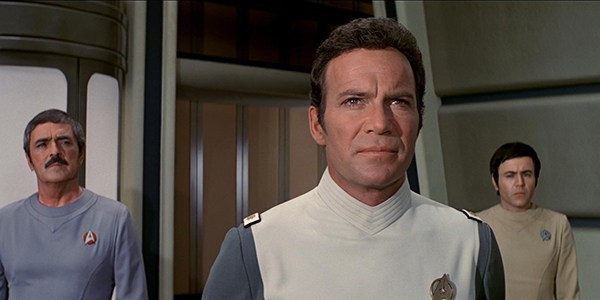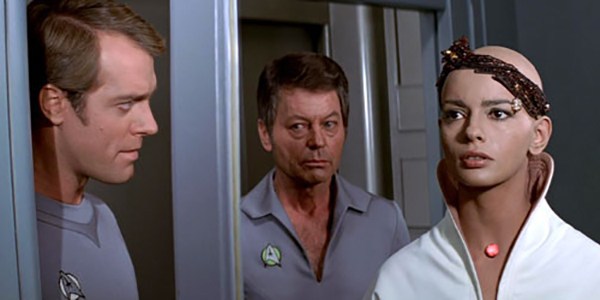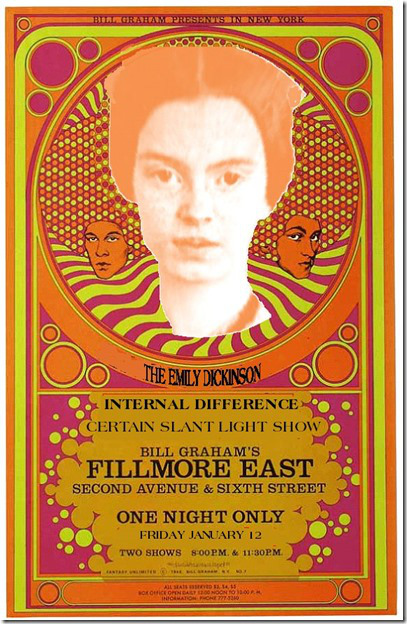In many respects, Star Trek: The Motion Picture signifies the purest, truest form of what Star Trek is.
How often have you asked that question, as a fan or not: what is Star Trek? The answer may be different when considering the movies over the last, almost forty years, and the fifty-year history of the multiple television shows. It’s a question we are asking once again now with new TV series Star Trek: Discovery, and it’s an answer different to a great many people.
Is it about our exploration of the universe? It is about our innate humanity and how it relates to the future, to technology, or to our place in the cosmos? Is it about comradeship, friendship, or the bond of a crew in the face of the unknown? Or is it, as the mantra from Spock over the opening titles of the iconic 1960’s series states, about strange new worlds, and boldly going where no man has gone before?
I can only tell you what Star Trek means to me, and how The Motion Picture embodies many of the above questions in the answers it delivers.
There is a long and detailed history which underpins The Motion Picture, which has been documented many times elsewhere, but for a long time, this was a TV-to-movie adaptation that seemed destined never to be made. Through the original pitch of a ‘Star Trek: Phase II’ TV series in the 1970s, following The Animated Series early in that decade, attempts were being made to revive the brand which was cancelled after three seasons in 1969, but which lived passionately on through early science fiction fandom and practically gave birth to the phenomenon of the convention circuit.
Once a course had been set for the big screen, the film had treatments and scripts both from series creator Gene Roddenberry and beyond, perhaps the most famous being ‘Planet of the Titans’ – in which Captain Kirk, Spock et al would have traveled back millions of years to teach mankind how to make fire (amongst other things). Storyboards and sketches have survived over the years from these aborted projects, by luminaries no less than Ralph McQuarrie, and speak to the original Star Trek films that never were. What we ended up with was The Motion Picture, and it has divided audiences ever since.

My relationship with this first Star Trek movie has changed over the years. As a teenager reared on Trek in the 1990s, arguably its most fertile decade ever given all the movies and TV shows in production at that time, The Motion Picture was profoundly boring. Where were the space battles, for one thing? The Klingons only showed up for five minutes. Plus it was slow – painfully, painfully slow. It didn’t help that I had watched the later movies beforehand, especially The Wrath of Khan which many, to this day, agree is probably the best Star Trek movie ever made to date, and one enormously different from its predecessor.
As I have slowed down and (perhaps) matured, so has my relationship with The Motion Picture deepened. No Star Trek movie since has matched it, not in quality but in tone, scale, and philosophical reach. The reasons for this are many – fan reaction, competition with other franchises, and the simple bombast that came with the advent of the 1980s and beyond in cinema. It remains, therefore, to this day, a grossly underrated film, one that is aging like a fine wine.
The pedigree involved surely must be some giveaway as to this. Beyond Roddenberry, a creatively divisive and difficult figure in terms of production at times, Robert Wise was drafted in by Paramount to direct. Wise was by this point a legendary directorial figure of American cinema, thanks to pictures such as West Side Story, The Day the Earth Stood Still and The Sound of Music, amongst many others. Not to mention director of photography Douglas Trumbull, of 2001: A Space Odyssey fame, no less.
The science fiction credentials among both of these men were as strong as, if not stronger than, Roddenberry’s, and their presence lends the movie an old-fashioned gravitas lacking in any of the later Trek films, even the better ones. This is not to say The Motion Picture doesn’t have faults – there are plenty. It is laborious in places, it takes many languid liberties to show off model work or cinematic effects, and it’s light on character work at the expense of arch, philosophical concepts. The latter point, however, is just as much a plus point as a criticism.

The Motion Picture is meditative, and less about Starfleet or the United Federation of Planets as it is the human experience. Indeed the final title card states: “the human adventure is just beginning.” For a picture many consider cold and distant, it’s actually an extremely human film, if admittedly not a warm one. Wise’s film strips out the camp and colour of the 1960’s television show and replaces it with a much more expensive, and much more post-Watergate, 1970’s aesthetic; the Enterprise is made up of grey/blues in contrast with white sleekness, and once the crew penetrate the V’Ger entity which threatens the planet Earth, they find a being filled with chrome, mechanical texture.
The film is cool, but in many places also redoubtable in how alien it strives to be; take for example our introduction to Commander Spock, on a fiery and almost cod-medieval Vulcan, as chief elders talk to him in a language as developed and alien as the Klingon dialect we hear in the opening few minutes, albeit briefly. Many attempts are made to labor the point that Star Trek is truly exploring new worlds.
Returning to Spock, his journey is one of the few semblances of character Roddenberry’s screenplay does give us. Spock begins the movie attempting to achieve ‘kolinahr’, aka pure Vulcan logic, which appears akin to some kind of personal religious experience. Upon his telepathic power detecting the incoming presence of the V’Ger entity, Spock forsakes his inner quest for truth to rejoin the Enterprise crew and, in the best traditions of Star Trek, attempt to find it where no man has gone before.
While Spock’s own personal journey for clarity and understanding isn’t satisfactorily fulfilled by the end, used more as a crutch to get him back on the bridge for the future of the franchise (something Leonard Nimoy at this point was heavily resisting), it speaks nonetheless to the deeper philosophical themes of Wise’s picture. Spock’s journey, to an extent, parallels that of V’Ger, whose own quest for enlightenment explores the one element Roddenberry clearly spent the majority of his life wrestling with – faith, belief, and worship.
While it may not appear so on the outset, The Motion Picture is all about man’s relationship with God, through the direct prism of V’Ger’s relationship with the ‘creator’. It refers to the Enterprise crew as “carbon-based units” as it strives to reach an apotheosis with its Creator. Much as Spock is seeking his own internal enlightenment, V’Ger is responding to a programmed imperative which it has literally interpreted, via gaining sentience across the cosmos, as knowing the source of its own creation. Much like humanity sees worship as a conduit to knowing God, or whatever deity being venerated, The Motion Picture posits a machine created by human hands to gather and transmit knowledge, returning with that knowledge and handing it *to* God, expecting a response in turn.
The idea speaks to Roddenberry’s difficult relationship with faith, as for an apparently secular TV series all about science, the original Star Trek is littered with stories about alien civilizations worshiping, being controlled by, or being tricked by some kind of force greater than them. V’Ger is the ultimate expression of that idea, and in many ways is the ultimate expression of Star Trek and its values.

Taking the bigger budget afforded it thanks to a cinematic scope, The Motion Picture strives to create visually an experience which delivers the central concept of exploring strange new worlds by taking us into the heart of the V’Ger cloud. Wise and Trumbull, though their effects have naturally dated a degree now, create a sense of wonder and indefinable alien reach the Star Trek series never recaptures; taking a cue from the climactic journey in 2001, Trumbull lingers on the monumental interior of V’Ger, with the visuals underscoring another central motif the film delivers: birth.
It’s no coincidence they paint V’Ger as looking much like a giant alien womb, with orifices and gaping vortexes, and eventually depict the appropriated, unfortunate Lieutenant Ilia as a giant birth mother akin to the space baby we saw at the end of 2001 itself. V’Ger isn’t just pregnant with knowledge, it becomes pregnant with the human experience which allows it to develop a higher level of sentience and understanding. While the climax of the script forces Admiral Kirk and his crew to connect dots necessarily fast, the fate of Ilia, Captain Decker, and V’Ger serve to make this point well.
For a picture all about human experience clashing with knowledge gathered from the unknown void, why then is The Motion Picture so emotionally distant? Star Trek as a TV show was often light and warm, even when exploring bigger science fiction ideas – comfortable in its melodrama and camp, with enough depth to carry the day. William Shatner here, however, thanks to directorial instruction, plays Kirk with a stern, commanding severity, certainly at the beginning. Kirk mutes the excited reaction of his old crew upon returning to the Enterprise in the face of crisis from a long-term desk job, almost with a cutthroat lack of empathy – perhaps given that he is, in equally cutthroat fashion, usurping Decker’s command from under him.
Nevertheless, it’s only when Spock and Dr. ‘Bones’ McCoy arrive does Kirk start to relax and feel like his old self, and this is perhaps the point. Kirk tells Spock and Bones more than once “I need you!”One senses he needs them not just to help save Earth, but to help balance himself. Kirk growing unease with his age and position is much better explored in the next movie, but it begins here in The Motion Picture, whether consciously or not.
The resonance may not always be apparent or recognized when watching The Motion Picture, at least as much as the genuine moments of laugh out loud one-liners (often thanks to DeForest Kelley’s wonderful delivery). Robert Wise’s opus remains, to my mind, very much misunderstood and underappreciated. It deserves remembering for Jerry Goldsmith’s magnificent score alone, which in no small part keeps the picture on the wheels at the points where the plot does indeed drag – it is, for me, a career best in a glittering jewel of a symphonic catalog, and my favorite cinematic score of all time.
As a film, I can’t honestly say The Motion Picture is the best Star Trek film – it’s not the most exciting, the most dramatically rich in terms of character or story, nor does it have a strong enough script to linger in the mind; but visually and thematically it’s as pure and honourable to the history and themes of Star Trek as anything before or since. It’s a film I urge you to return to, reconsider, and be patient with. Rewards do await.
As the end title card perhaps should have said, the Star Trek adventure is just beginning.
What do you think about Star Trek: The Motion Picture? Fan or not? Let us know.
This article first appeared on Film Inquiry on January 20th, 2017.
- More





